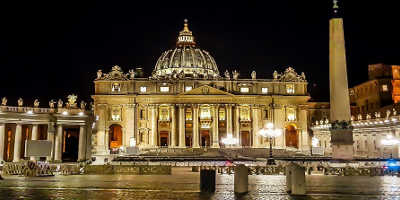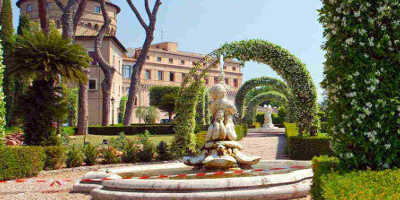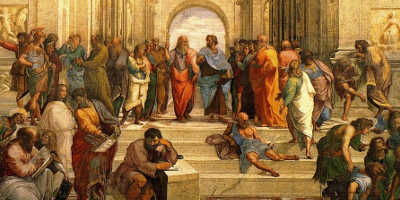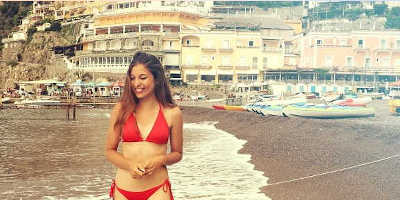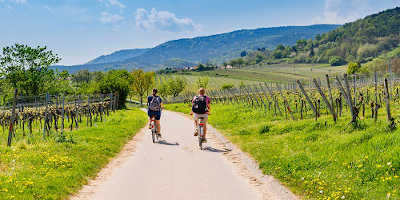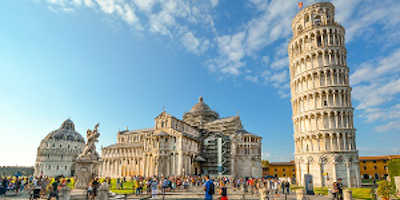Who was Gian Lorenzo Bernini?
Gian Lorenzo Bernini may not be as well-known as Michelangelo or DaVinci, but he was an important Roman artist of that age. How much do you know about Gian Lorenzo Bernini?
Born and died in the 17th century, Bernini was known as one of best Italian sculptors and had a successful career amongst some of the other greats of his time. He was a star sculptor as well as being the architecture for many noteworthy buildings in Italy, his most renowned work being at St. Peter’s.
Early Life of Gian Lorenzo Bernini
Bernini was born the 7th of December 1598, in Naples, Italy. His father, Pietro Bernini, was a sculptor who willed Bernini to study as much art as possible, striving for him to become a child prodigy. Pietro moved the family to Rome in 1606 where he secured a number of papal commissions. Rome also provided sculptors with gainful employment opportunities, such as restoring antique sculptures, an experience that had an important influence on the young Bernini. After receiving much training from his father, Pietro organised an audience with the Pope at the time – Pope Paul V. This was so 8-year-old Bernini could show the Pope what he was capable of. Bernini at the instruction of his father proceeded to paint a portrait of Saint Paul, which deemed him the next ‘Michelangelo’ by the Pope and soon began his formal artistic education. As he came into his late teens, Bernini rapidly began to obtain important commissions of his own. He was only in his early 20s when Cardinal Scipione Borghese, Pope Paul V’s nephew, commissioned 4 monumental marble groups for his Roman Vila. These included; Aeneus and Anchises 1618-1619; Pluto and Persephone 1621-1622; Apollo and Daphne 1622-1624 and David 1623-1624. The technique and naturalism displayed in these works sealed Bernini’s reputation as a master carver who transcended his material and turned marble into flesh, foliage and fur.
The career of Gian Lorenzo Bernini
His style had an advanced interpretation of subjects, forms, as well as the combination of media. The majority of his work was influenced by the antique Greek and Roman marble statues seen in the Vatican City. Many of his sculptures were of just one figure or a small number of figures. Bernini’s most famous sculptures include fountains like the Barcaccia in Piazza di Spagna, or the masterpiece of Aeneas, Anchises, and Ascanius. The statues commissioned by Scipione (mentioned above) can now be seen in the Borghese Gallery, an extensive art gallery in Rome which holds a large number of Bernini’s sculptures, making it a great place to appreciate his talent and genius. It was, however, Bernini’s ties with another papal family – the Barberini’s – that propelled his career forward. Cardinal Maffeo Barberini undertook a series of large-scale projects for St. Peter’s Basilica, to which Bernini and his artistic talents were essential. One of his most first and most important commissions was the Baldacchino (1624-1633) a large bronze canopy that marks the site of St. Peter’s tomb in the crossing of St. Peter’s Basilica. Bernini also redesigned the 4 central pillars of the crossing, creating niches for four 14-foot-high statues and executing one of them, Saint Longinus in 1680. The Basilica became the main focus of Bernini’s career with a whole team around him. He oversaw sculptors, stonemasons, bronze casters, draftsmen and engineers, leading him to be named the “architect of Saint Peters”. He continued to remodel the basilica through the following decades, surviving the initial humiliation of losing the building’s bell-towers in 1646. His list of works is endless, with other honourable mentions including the Cornaro Chapel in the church of Santa Maria della Vittoria and the lavish fountains of the Piazza Barberini. Bernini’s architectural designs are conspicuous in their innovative combination of architecture and sculpture, as well as their exploitation of natural light and space.
Personal Life of Gian Lorenzo Bernini
Bernini stated that he had no need for children or a wife, claiming that his sculptures were all he needed, as they were like children to him. This all changed when Bernini met Constanza, the wife of his assistant Matteo Bonarelli. A love affair began and lasted for 4 years, during which Bernini created a bust of her, expressing the desire and intimacy between the two. Busts had not been used for informal portraits since Ancient Rome, instigating a new era of busts in European sculpture. Their love would soon end in scandal however, when Bernini discovered that Constanza was also having an affair with his brother, Luigi. Known for his short temper anyway, Bernini became enraged at the news and pursued his brother in rage, almost beating him to death with a crowbar and ordering his servant to slice Constanza’s face open with a razor blade. Due to his prestige and connections with the papacy, Bernini was not punished for his crimes, but instead was forced to marry, which he did, to Caterina Tezio in 1639. The two had 11 children together. Unfortunately for his previous lover and his brother, Constanza was imprisoned for adultery, and Luigi was banished from Rome.
Bernini remained physically and mentally active in his profession until just 2 weeks before his death, where he died in his home in 1680 from a stroke. His works today are still celebrated throughout the Vatican and beyond, making him one of the most unchallenged sculptor’s of his time.

